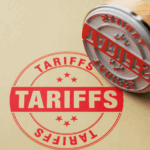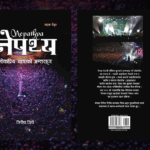It is now time to build an ecosystem for luxury travelers to complement the hotels
It’s that time of year when Nepal garners global attention as people climb Mount Everest. The current competition focuses on speed, as in how fast reach the summit and how many times one can summit in a season. However while Everest has placed Nepal on the global map, we are selling this at very low prices with much of the revenues from the climbers going to intermediaries. One can still climb the highest mountain the world for around fifty to sixty thousand dollars. I have advocated the need for increase in prices to half a million dollars and limiting the number of expeditions. In the 1970s, Everest expeditions were considered high-end luxury tourism, with groups spending one to two million dollars per expedition. We have struggled to understand what constitutes luxury tourism and how a country can earn more from tourism with fewer visitors ensuring sustainability.
The opening of the Shintamani resort has positioned Nepal on the global luxury tourism map, as it is featured in numerous travel portals and magazines. Many promotors of luxury tourism have written about this property. The Kathmandu and Dhulikhel properties of Hotel Dwarikas have become synonymous with heritage and luxury. However, it is noteworthy that the hotels alone are not sufficient, there is a dire need to have a complex ecosystem built around luxury tourism.
In Nepal, finding high-end luxury vehicles is challenging due to the duty structure significantly increasing the costs. Visitors to countries like Nepal are aware of the infrastructure challenges such as poor road conditions, yet they manage to navigate the difficulties using helicopters and luxury four-wheel-drive vehicles.
In the 1970s, Mercedes cars were imported to serve as taxis for the guests attending the coronation of the Late King Birendra. I remember these vehicles parked at the Soaltee Hotel, where they were particularly popular among the guests from India.
Businesspeople also contributed to this situation. When the government allowed travel agencies to import high-end-luxury vehicles with only 1% duty hundreds of agencies registered overnight. Consequently businesspeople began travelling in these green license plate vehicles. As a result, the government was forced to impose restrictions on this practice.
It may now be time to allow hotels or travel agencies catering luxury guests, with a condition of meeting a certain turnover threshold to import vehicles at minimal customs duties. This change could make renting luxury vehicles more affordable in Nepal.
Luxury travel involves ensuring that the security of clients is well managed. During the luxury journeys I conduct in Bhutan, we collaborate with global security companies that specialize in protecting celebrities and wealthy business professionals. These companies require payment in US dollars, which is challenging due to our strict foreign exchange laws.
Obtaining permits for private jets can also be quite difficult, and there are no reliable service providers available to manage the logistics. A private travel company in Nepal, which presents itself as an expert in luxury travel, failed to ask us for feedback about the experiences of the clients we referred to them.
Ultimately, the success of luxury travel depends on how well staff interact with tourists. Staff members don’t need extensive qualifications, but they must know how to take care of their guests. Historically, the success of Tiger Tops in Chitwan during the 1970s and 1980s was due to dedicated local staff, supervised by excellent storytellers, who helped put the property on the global map.
Luxury travel is a highly personalized experience that aims to exceed client expectations. Bhutan has excelled in attracting tourists in this sector, which requires a combination of effective policies, government support, and a strong private sector to thrive.
A common question is whether Nepal should pursue low-value, high-volume tourism or high-value, low-volume tourism. I advocate for a combination of both. In the tourism strategy work that my management team has done in Rwanda, our approach was to designate specific areas for high-end luxury tourism and others for mass tourism. For instance, the capital city of Kigali, with its conference facilities, serves as a high-volume market offering competitive rates, while areas for gorilla trekking are developed for the high-end segment. Many travelers are willing to spend $1,500 for just an hour with the gorillas, which means they can also afford to pay for high-end accommodations.
Moreover, exclusivity is crucial for high-end luxury resorts. In Namo Buddha, near Kathmandu, there are luxury resorts; however, the noise from loudspeakers in nearby picnic spots disrupts the tranquility that guests seek. High-end properties and low-end establishments cannot coexist in the same space. It is essential to designate specific areas for luxury tourism and others for the mass market.
We must then build an ecosystem within these areas to cater to the target segments. Luxury travelers require premium vehicles, while mass market tourists need easy access through public transportation. The sooner the travel industry and government come to this understanding, the better it will be for Nepal’s tourism sector.
Image Credit: Shinta Mani Mustang, Nepal
Sujeev is the founder CEO of beed. He leverages over 25 years of experience in diverse fields and geographies to advise, lead and inspire. With comprehensive networks in Nepal’s public, private, civil and diplomatic sectors, Sujeev is a trusted business and policy advisor and respected strategic thinker. From economies of developing countries to economies of human beings, he moves across different worlds, with his passion for the Himalayas being the axis.





